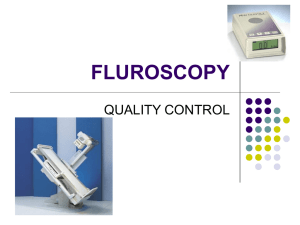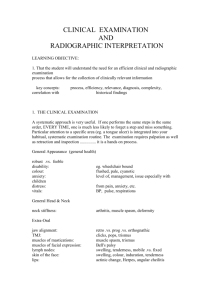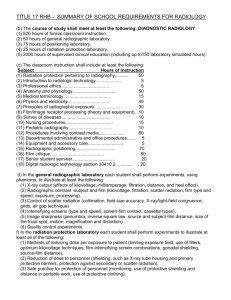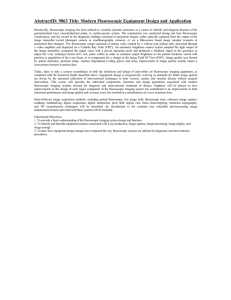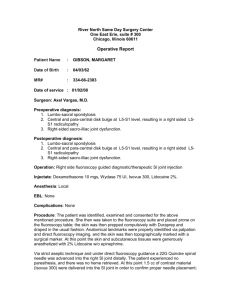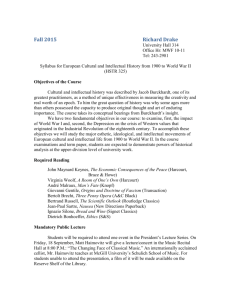COURSE TITLE : RADIOGRAPHIC TECHNIQUE 3
advertisement
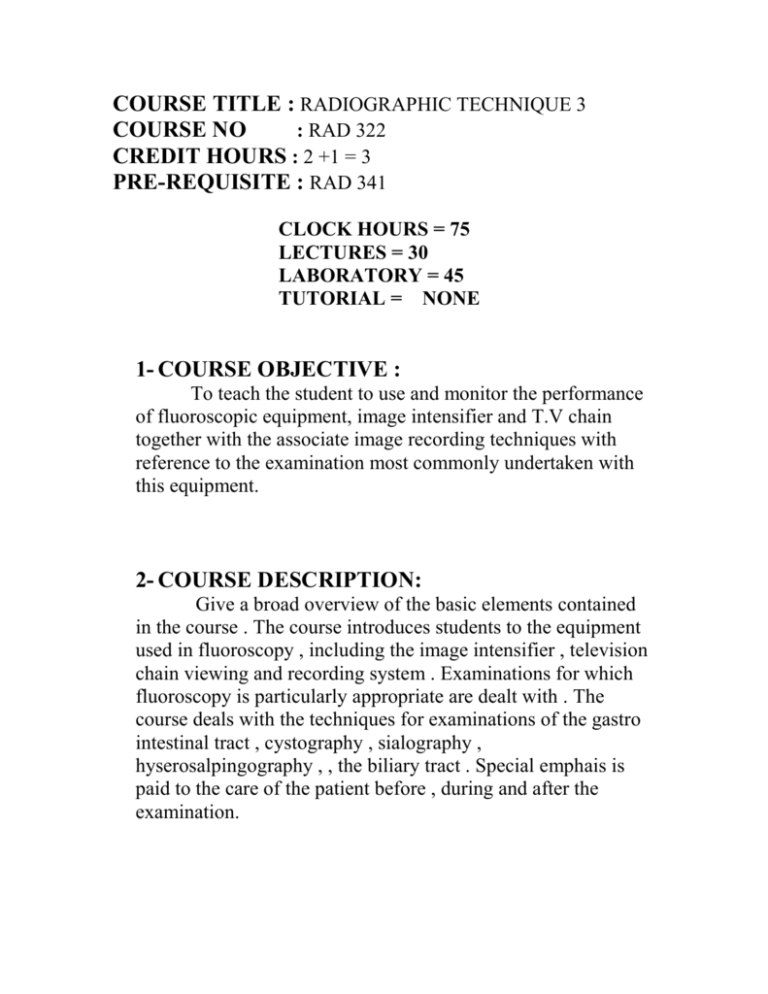
COURSE TITLE : RADIOGRAPHIC TECHNIQUE 3 COURSE NO : RAD 322 CREDIT HOURS : 2 +1 = 3 PRE-REQUISITE : RAD 341 CLOCK HOURS = 75 LECTURES = 30 LABORATORY = 45 TUTORIAL = NONE 1- COURSE OBJECTIVE : To teach the student to use and monitor the performance of fluoroscopic equipment, image intensifier and T.V chain together with the associate image recording techniques with reference to the examination most commonly undertaken with this equipment. 2- COURSE DESCRIPTION: Give a broad overview of the basic elements contained in the course . The course introduces students to the equipment used in fluoroscopy , including the image intensifier , television chain viewing and recording system . Examinations for which fluoroscopy is particularly appropriate are dealt with . The course deals with the techniques for examinations of the gastro intestinal tract , cystography , sialography , hyserosalpingography , , the biliary tract . Special emphais is paid to the care of the patient before , during and after the examination. 3- INSTRUCTIONAL OBJECTIVES: By the end of this course, the students will be able to: 1- Describe the equipment necessary to perform conventional fluoroscopy . 2- Explain how image intensification occurs, and describe the equipment required to procuce image intensification and the television image. 3- Explain how the vidicon camera and the cathode ray tube work in the production of the visual television image . 4- Operate the fluoroscopic unit and select appropriate exposure and screening factors. 5- State the contrast media used for the gastro-intestinal tract , cystourography , the biliary tract , hystrosalpingography and sialography . 4- OUTLINE OF COURSE CONTENTENTS : 1- Fluorescence and fluorescent material in radiology . 2- Image intensifiers : construction and operation and advantage over conventional fluoroscope. 3- C-Arm and advantages. 4- Radiation hazard and radiation protection during fluoroscopy 5- Contrast media for G.S.T and pharmacological agents. 6- The gastro intestinal tract : Barium swallow, meal , follow through and enema. 7- Sialography contrast media, technique and film reading. 8- Cystourography contrast media, technique and film reading. 9- Biliary tract : operative, post operative and T-Tube cholangiogram and ERCP. 10-Hysterosalpingography : contrast media, technique and film reading . 5- PRACTICAL EXPERIMENTS: 1- Revision of the anatomy and physiology of each region under examination . 2- Interpretation of normal and abnormal fluoroscopic spot film. 6- EVALUATION METHOD: 1- Two midterm written examination ………… 40 degree 2- Practical examination …………………………20 degree 3- Final written examination ……………………40 degree 7- TEXTBOOKS : 1- Radiographic positiong and related anatomy : by Kenneth L.Bontrager and John P. Lampignano . 2- Diagnostic Radiology : by Glanda Bryan 3- Radiographic procedures : by Stephen chapman 4- Positioning in Radiography : by Clarke. 8- ADDITIONAL MATERIALS: a. Snell’s Atlas of Anatomy b. Equipment for Diagnostic Radiography : by Chesney c. Understanding Radiogaphy : by Steven Hiss and Charles Thomas and Field U.S.A

